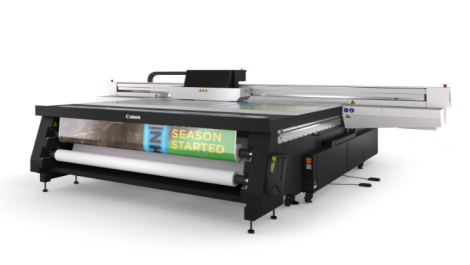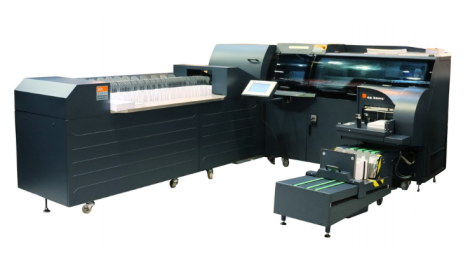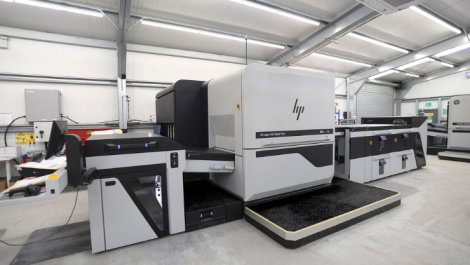GPT claims to have done good business at Printoberfest
There was a touch of Bavaria in Berkshire in October, as wide format dealer GPT opened its doors for Printoberfest, displaying a range of HP and Mimaki printing equipment alongside finishing and media.
It may have been the promise of German sausages and beer on the menu that drew printers to Graphic Printing Technologies’ Printoberfest event early in October, but more than likely it was the chance to see the only demonstrating HP Scitex FB550 in the south of England, alongside a wide range of flatbed and roll-to-roll kit from Mimaki.
The two day event was running for the second time at GPT’s office and showroom in Reading, and general manager Shaun Thompson was sufficiently impressed by the turnout to envisage a third Printoberfest in 2016. He told Digital Printer: ‘This is an event; it’s not an open day. It’s Printoberfest and I think it has become very successful. We have taken substantial orders at the event, which is great. We have showcased the HP Scitex FB550 and the event has enabled us for the first time to show the full range of HP Latex and UV printers, and the full range of Mimaki solvent printers that are here too.
‘We will definitely do it again next year, without any question. The financial return is measurable and very good but the behind the scenes effort is huge. You get better at that every time you do it though. There have been more than 40 customers over two days, and everyone has come to see something specific. That’s really important. It certainly compares well with a trade show in terms of leads and it delivers a much better ROI, considering the costs of a trade show.’
GPT started selling HP systems about a year ago, mostly on the Latex side. It has now sold nine HP Latex 300 series systems. The HP Scitex flatbeds are a newer area for the company however. Launched at FESPA in June, the FB550 is an upgraded model on the previous HP Scitex FB500, with improvements in print quality, speed, and robustness. The 1.6 metre machine can print on substrates up to a thickness of 2.5 inches. It can also achieve both matt and gloss effect finishes through a setting that causes the curing lamp to operate on the next pass of the print head, rather than straight away; this allows the dot laid down to spread and dome slightly, giving the gloss effect.
On show from the Mimaki perspective was the JV150, featuring the latest Epson print head, which delivers improved print performance and higher output speeds than the JV33 which it replaces. The Epson head also has replacement capability for 80 nozzles as a safeguard for production users. A Mimaki print & cut device (CJV 150) was also on display, this machine featuring the circulation unit that allows white and silver inks to be used. Another big benefit is an optical measure of the media width, instead of using pinch rollers, which allows the entire width to be used, reducing waste.
While Esko was present to discuss its Kongsberg cutting tables (though there were no tables actually on show at Printoberfest), and there were live application areas with demonstrations on techniques such as vehicle wrapping, what was less expected at Printoberfest was a new software app which turns a tablet or mobile device into a laser measurement device. From a company called ike, the product is called Spike and it was being shown in the UK for the first time. Put simply, by attaching a small device to the smartphone or tablet and downloading the Spike app, it is possible to measure the area, height and length of an object for signage simply by lining the object up with the aperture of the smartphone. It is able to measure target distance, true bearing, and pitch and roll, and this information can be exported as a PDF, KML (for Google Earth) or up to the cloud.
Martin Ehrhardt, ike’s director of sales for EMEA, explained: ‘It’s useful for sign companies that need to know how big a sign is on a wall, and it means that they don’t need to get up a ladder and measure it by hand. We’ve seen big growth in the US in the last few months, with 500 companies, mostly in signage using it.’





